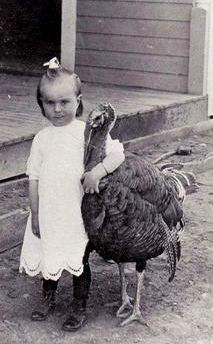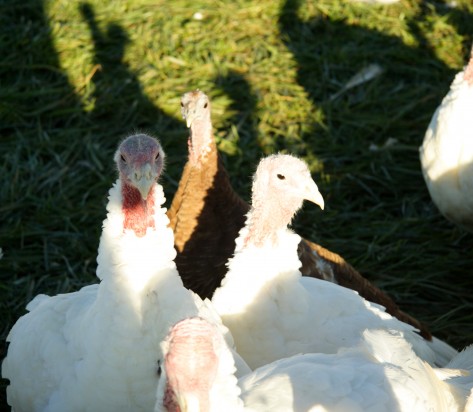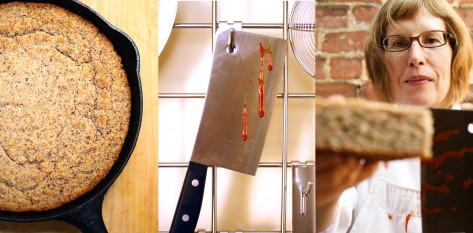I hate to waste food. Even bad food.
That’s how a loaf of bread made with more ingredients that I can count on both hands worked its way into the two photographs below, illustrating quotes that get at, with more folk wit and elan than I could wring from a slice of milk-soaked bread, why you should avoid processed, or “white,” bread.
![“The whiter the bread, the sooner you’re dead.” —Folk saying, dating from the mid-1920s* Bread #1, 8 November 2015, Holly Jennings, America Mixed Media: Premium Potato Bread (Enriched Wheat Flour [Flour, Malted Barley Flour, Reduced Iron, Niacin, Thiamin Mononitrate (Vitamin B1), Riboflavin (Vitamin B2), Folic Acid], Water, High Fructose Corn Syrup, Yeast, Potato Flour, Soybean Oil, Salt, Wheat Gluten, Corn Flour, Mono- and Diglycerides, Datem, Calcium Propionate (Preservative), Monocalcium Phosphate, Calcium Sulfate, Grain Vinegar, Spice & Coloring, Soy Lecithin, Natural & Artificial Flavor, Soy Flour.), 18 October 2015; Pigment print by Joseph Sudek entitled The Cemetery of Mala Strana, 1940–1950 (reprinted in Josef Sudek [1896–1976]: Sixty Pigment Prints from the Artist’s Estate [New York: Salander-O’Reilly Galleries]). *At the time this saying was coined, ultra-refined, ultra-white, and less-nutritious flour, possible with the invention of the roller mill and bleach, had become common. Not until the 1940s did American milling operations start to enrich flour with thiamine, niacin, riboflavin, and iron in an attempt to compensate for the loss of nutritional value in flour milled using modern milling techniques.](https://dowdycornerscookbookclub.com/wp-content/uploads/2015/11/Photo-by-Josef-Sudek-with-frame-made-of-bread-473x319.jpg)
“The whiter the bread, the sooner you’re dead.”
—Folk saying, dating from the mid-1920s*
Bread #1, 8 November 2015, Holly Jennings, America
Mixed Media: Premium Potato Bread (Enriched Wheat Flour [Flour, Malted Barley Flour, Reduced Iron, Niacin, Thiamin Mononitrate (Vitamin B1), Riboflavin (Vitamin B2), Folic Acid], Water, High Fructose Corn Syrup, Yeast, Potato Flour, Soybean Oil, Salt, Wheat Gluten, Corn Flour, Mono- and Diglycerides, Datem, Calcium Propionate (Preservative), Monocalcium Phosphate, Calcium Sulfate, Grain Vinegar, Spice & Coloring, Soy Lecithin, Natural & Artificial Flavor, Soy Flour.), 18 October 2015; Pigment print by Joseph Sudek entitled The Cemetery of Mala Strana, 1940–1950 (reprinted in Josef Sudek [1896–1976]: Sixty Pigment Prints from the Artist’s Estate [New York: Salander-O’Reilly Galleries]).
*At the time this saying was coined, ultra-refined, ultra-white, and less-nutritious flour, possible with the invention of the roller mill and bleach, had become common. Not until the 1940s did American milling operations start to enrich flour with thiamine, niacin, riboflavin, and iron in an attempt to compensate for the loss of nutritional value in flour milled using modern milling techniques.
![“People who eat white bread have no dreams.” —Diana Vreeland, Empress of Fashion Bread #2, 8 November 2015, Holly Jennings, America Mixed Media: Premium Potato Bread (Enriched Wheat Flour [Flour, Malted Barley Flour, Reduced Iron, Niacin, Thiamin Mononitrate (Vitamin B1), Riboflavin (Vitamin B2), Folic Acid], Water, High Fructose Corn Syrup, Yeast, Potato Flour, Soybean Oil, Salt, Wheat Gluten, Corn Flour, Mono- and Diglycerides, Datem, Calcium Propionate (Preservative), Monocalcium Phosphate, Calcium Sulfate, Grain Vinegar, Spice & Coloring, Soy Lecithin, Natural & Artificial Flavor, Soy Flour.), 18 October 2015; Silver gelatin photograph by Marcia Due entitled Columbia County, New York, 1993 (reprinted in Design Quarterly 164 [Spring 1995]).](https://dowdycornerscookbookclub.com/wp-content/uploads/2015/11/Photo-by-Marcia-Due-with-frame-made-of-bread-473x324.jpg)
“People who eat white bread have no dreams.”
—Diana Vreeland, Empress of Fashion
Bread #2, 8 November 2015, Holly Jennings, America
Mixed Media: Premium Potato Bread (Enriched Wheat Flour [Flour, Malted Barley Flour, Reduced Iron, Niacin, Thiamin Mononitrate (Vitamin B1), Riboflavin (Vitamin B2), Folic Acid], Water, High Fructose Corn Syrup, Yeast, Potato Flour, Soybean Oil, Salt, Wheat Gluten, Corn Flour, Mono- and Diglycerides, Datem, Calcium Propionate (Preservative), Monocalcium Phosphate, Calcium Sulfate, Grain Vinegar, Spice & Coloring, Soy Lecithin, Natural & Artificial Flavor, Soy Flour.), 18 October 2015; Silver gelatin photograph by Marcia Due entitled Columbia County, New York, 1993 (reprinted in Design Quarterly 164 [Spring 1995]).
The mixed media, faux egg-colored (or it the color meant to conjure butter?) loaf of bread that I sacrificed to art came into my possession this October, during a weekend get-a-way with my husband. Destination: My family’s
Read the rest of this entry →

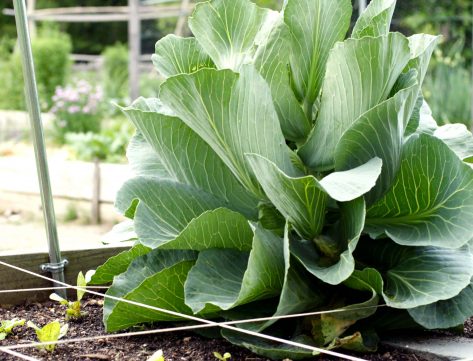

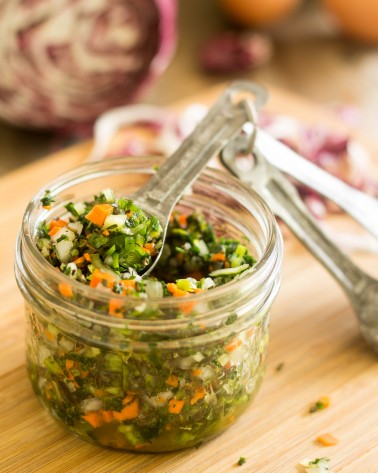
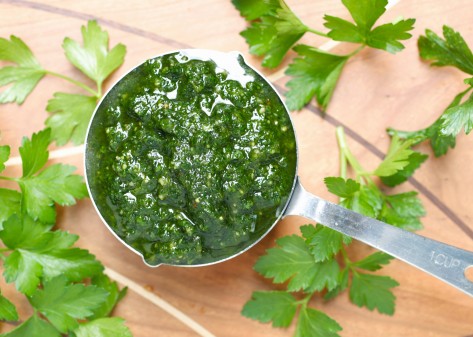

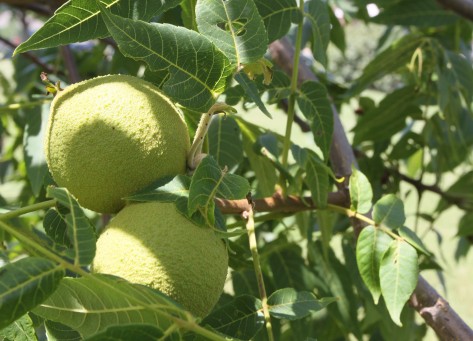
![“The whiter the bread, the sooner you’re dead.” —Folk saying, dating from the mid-1920s* Bread #1, 8 November 2015, Holly Jennings, America Mixed Media: Premium Potato Bread (Enriched Wheat Flour [Flour, Malted Barley Flour, Reduced Iron, Niacin, Thiamin Mononitrate (Vitamin B1), Riboflavin (Vitamin B2), Folic Acid], Water, High Fructose Corn Syrup, Yeast, Potato Flour, Soybean Oil, Salt, Wheat Gluten, Corn Flour, Mono- and Diglycerides, Datem, Calcium Propionate (Preservative), Monocalcium Phosphate, Calcium Sulfate, Grain Vinegar, Spice & Coloring, Soy Lecithin, Natural & Artificial Flavor, Soy Flour.), 18 October 2015; Pigment print by Joseph Sudek entitled The Cemetery of Mala Strana, 1940–1950 (reprinted in Josef Sudek [1896–1976]: Sixty Pigment Prints from the Artist’s Estate [New York: Salander-O’Reilly Galleries]). *At the time this saying was coined, ultra-refined, ultra-white, and less-nutritious flour, possible with the invention of the roller mill and bleach, had become common. Not until the 1940s did American milling operations start to enrich flour with thiamine, niacin, riboflavin, and iron in an attempt to compensate for the loss of nutritional value in flour milled using modern milling techniques.](https://dowdycornerscookbookclub.com/wp-content/uploads/2015/11/Photo-by-Josef-Sudek-with-frame-made-of-bread-473x319.jpg)
![“People who eat white bread have no dreams.” —Diana Vreeland, Empress of Fashion Bread #2, 8 November 2015, Holly Jennings, America Mixed Media: Premium Potato Bread (Enriched Wheat Flour [Flour, Malted Barley Flour, Reduced Iron, Niacin, Thiamin Mononitrate (Vitamin B1), Riboflavin (Vitamin B2), Folic Acid], Water, High Fructose Corn Syrup, Yeast, Potato Flour, Soybean Oil, Salt, Wheat Gluten, Corn Flour, Mono- and Diglycerides, Datem, Calcium Propionate (Preservative), Monocalcium Phosphate, Calcium Sulfate, Grain Vinegar, Spice & Coloring, Soy Lecithin, Natural & Artificial Flavor, Soy Flour.), 18 October 2015; Silver gelatin photograph by Marcia Due entitled Columbia County, New York, 1993 (reprinted in Design Quarterly 164 [Spring 1995]).](https://dowdycornerscookbookclub.com/wp-content/uploads/2015/11/Photo-by-Marcia-Due-with-frame-made-of-bread-473x324.jpg)
